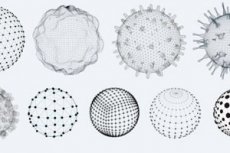
关于病毒在动物和人之间的传播。许多感染都是从动物传染给人类的。例如,我们可以举出SARS-CoV2冠状病毒感染——众所周知的COVID-19的病原体,或者致命的埃博拉病毒。在自然界中,这些病毒寄生在蝙蝠体内。病原体可以从动物传播给人类,然后再传播回来,或者适应新的生物体并在其中“定居”。
如果病毒繁殖和变异速度很快,那么其“居住地”的变化可以通过RNA或DNA中的遗传信息来确定。如果能够彻底读取病毒基因组,并了解病毒先前的居住地、“相关”毒株和变异等信息,这种方法就很适用。所有这些对于确定感染的变化程度都是必要的。
然而,如果病原体可以从蝙蝠或其他动物传播给人类,那么同样的过程是否会在相反的方向发生?许多人还记得,同样的冠状病毒在主人感染COVID-19的宠物身上也周期性地被检测到。科学家解释说:病毒在从一个生物体传播到另一个生物体的过程中,并不总是会发生基因变化——至少在最初是这样。病原体是否发生突变并不重要。关键在于它能够适应新的结构和环境。
最近,研究人员分析了病毒在人与动物之间传播的频率。他们研究了各种信息数据库中积累的数百万个病毒序列。结果表明,动物感染人的频率高于人感染动物的频率(比例为64:36)。在病毒感染中,冠状病毒和甲型流感病原体传播最为频繁。然而,即使将这些感染从列表中剔除,动物感染人的频率仍然更高。
正如专家所解释的,病毒在动物和人类之间的传播激活了病原体的进化变化。与此同时,这种能够在不同生物体中平等生存的感染几乎不会发生变化。显然,它早已具备了相当强的适应性。
重要的是要认识到,相互感染可能导致潜伏携带及其他问题。监测此类过程虽然困难,但却是必要的。因此,包括生物学家、动物学家、传染病病毒学家、兽医和生态学家在内的不同领域专家的共同努力至关重要。
文章完整版可在《自然生态与进化》期刊页面上查阅

